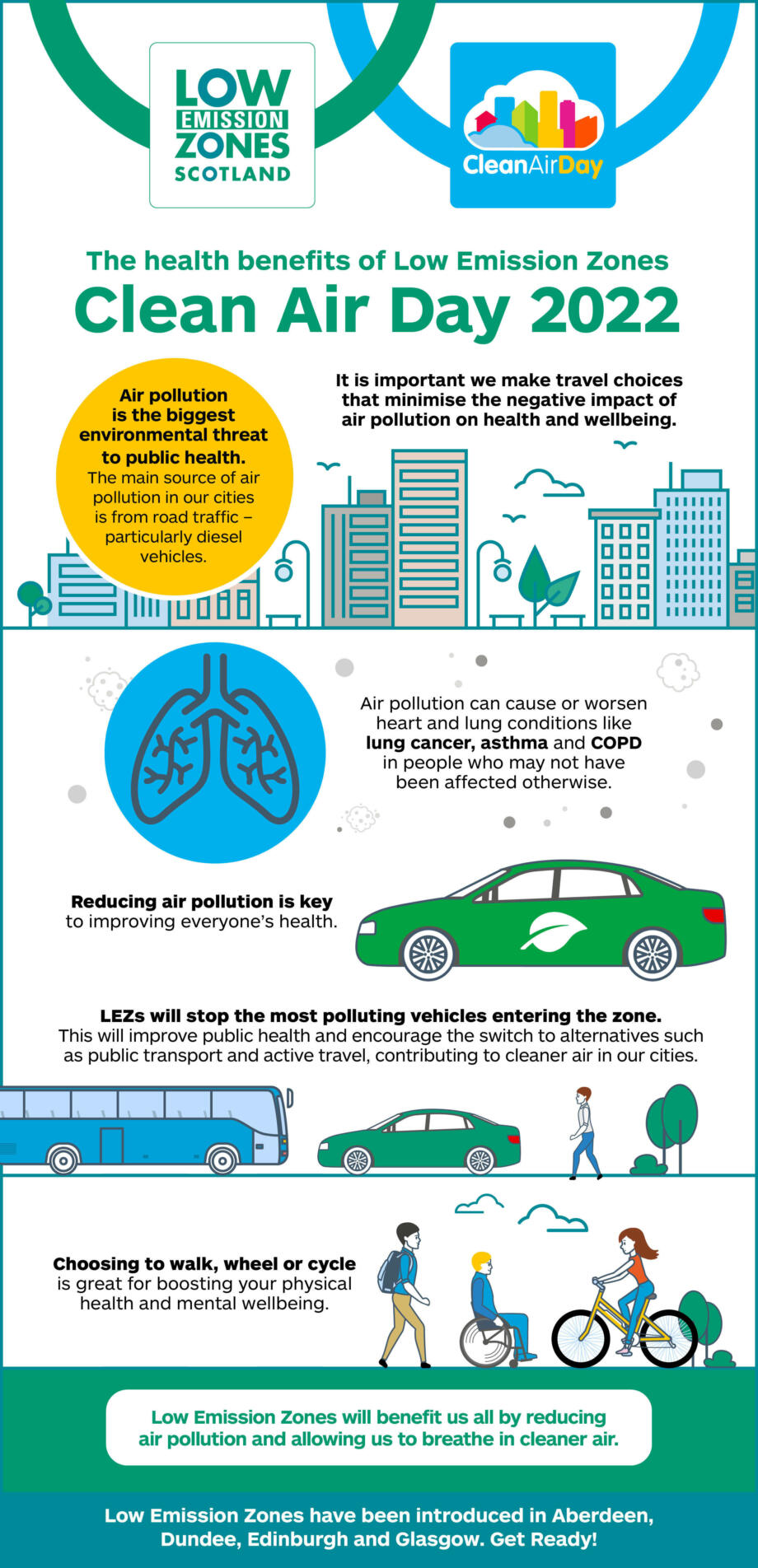The health benefits of Low Emission Zones – Clean Air Day 2022

16 June is Clean Air Day 2022 and to mark the day, Joseph Carter from Asthma + Lung UK Scotland discusses the impact of air pollution on public health and how Low Emission Zones (LEZs) will help.
Air pollution is one of the biggest environmental threats to public health. At a cost of £1.1bn per year to the NHS, it is draining our resources, straining our health system and cutting short over 2,500 lives a year in Scotland.*
It is causing new lung conditions like lung cancer and worsening existing ones. With 1 in 5 Scots developing a lung condition like asthma and chronic obstructive pulmonary disease (COPD) in their lifetime, for them, it can trigger life-threatening asthma attacks and exacerbations.
Children’s lungs are also more susceptible to air pollution as they are still growing, and they also breathe faster than adults. As they grow, toxic air can stunt the growth of their lungs, making them less resilient into adulthood and placing them at greater risk of lung disease in the future. More than 70,000 children have asthma in Scotland and for them, peaks in toxic air can put them at risk of a potentially life-threatening attack.
The introduction of LEZs in Aberdeen, Dundee, Edinburgh and Glasgow is going to be a huge step forward to start tackling this major health problem. Starting in Glasgow in 2018 for buses only, LEZs were introduced in all four cities on 31 May 2022, with Glasgow’s scheme now including all vehicles.
LEZs are one of the most effective way of reducing pollution, but they require brave political decisions.
Whilst we congratulate these councils and the Scottish Government for introducing LEZs, we would like to see policies that go further, helping to clear up pollution hotspots throughout the country, not just in these four main cities. We need a model of LEZs that can work for any town or city across the nation.
We need politicians from all parties to be coming together to tackle air pollution and encourage behavioural change. With investment in public transport and active travel, and exemptions for the most vulnerable, we redesigned our cities to be far healthier places, where people aren’t exposed to toxic levels of air pollution.
From Berlin and Lyon to Paris and Brussels, LEZs have been introduced in over 250 places across Europe resulting in a fall in harmful pollutants, a decrease in car use and an increase in walking and cycling. In London, the introduction of LEZs has reduced air pollution by over a third in central London.
Numerous surveys have shown that communities want bold action on toxic air and for governments to help them protect their health and their families. No one wants to see their loved one fight for breath just because the air they breathe is toxic.
We need to make tackling air pollution a national priority. LEZs are just the start. We all need to think about how we live, how we work and how we travel. We need to incentivise the behavioural change needed to create a world of clean air and healthy lungs. We all need to make the changes now – lives are depending on it.
Joseph Carter, Head of Devolved Nations at Asthma + Lung UK Scotland
*It is important to note that attributable deaths are not actual recorded deaths in a particular year; the figure is a statistically derived estimate, intended to convey as faithfully as possible the amount of excess mortality caused by air pollution across the population as a whole. The figure should therefore not be interpreted as the number of individuals in any year where air pollution has made some contribution to earlier death; that number is unknown but is almost certainly larger.
